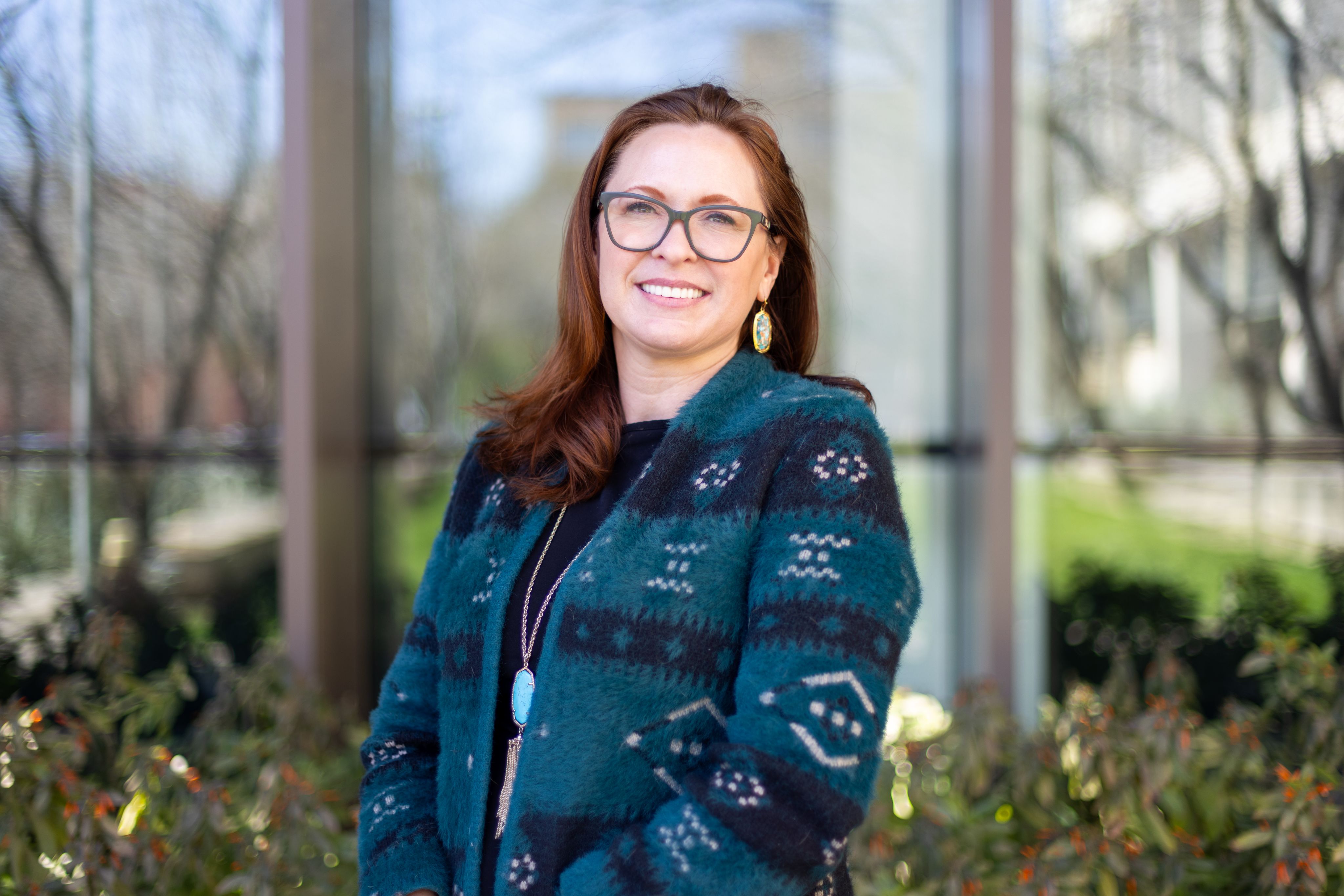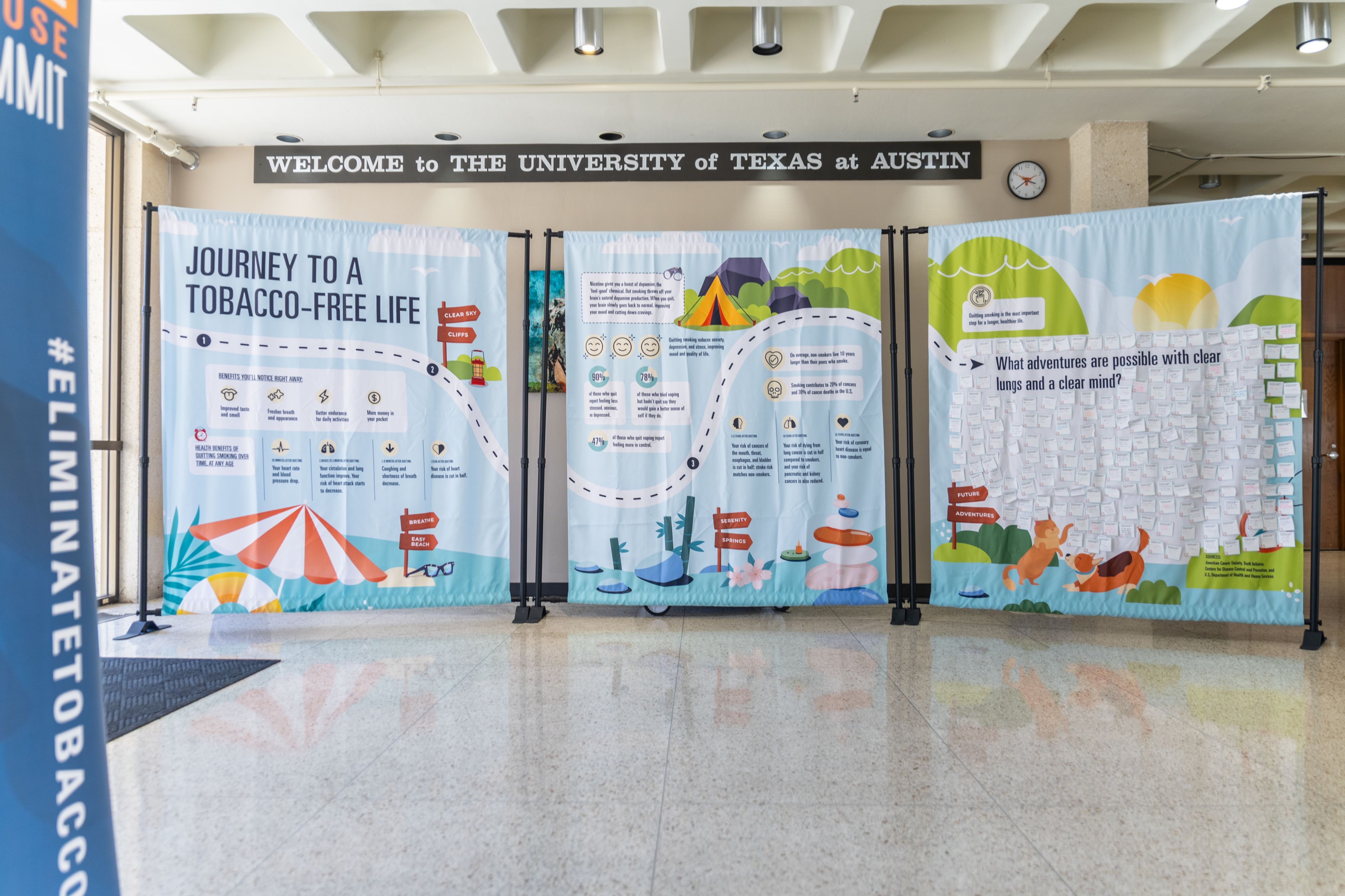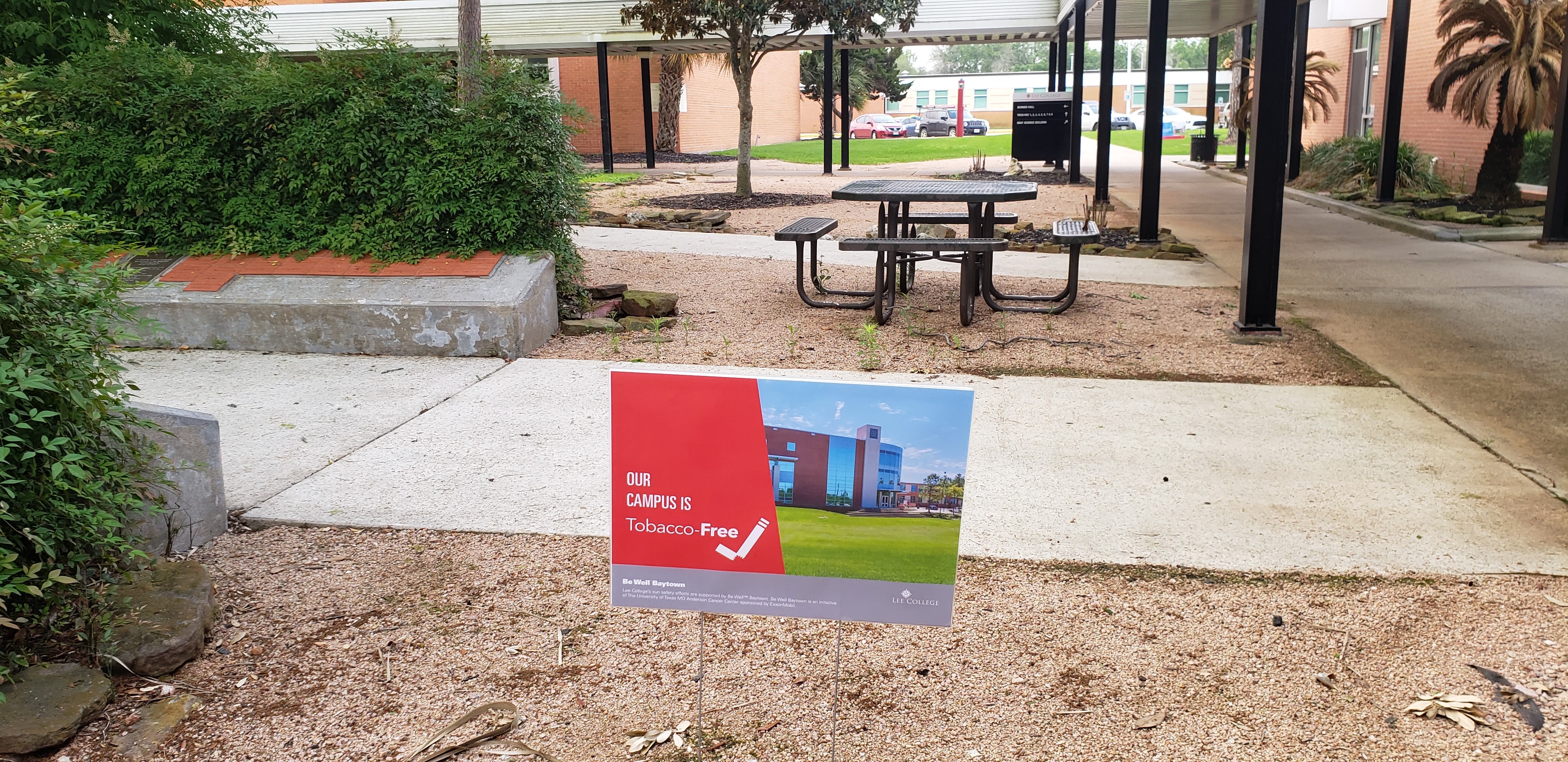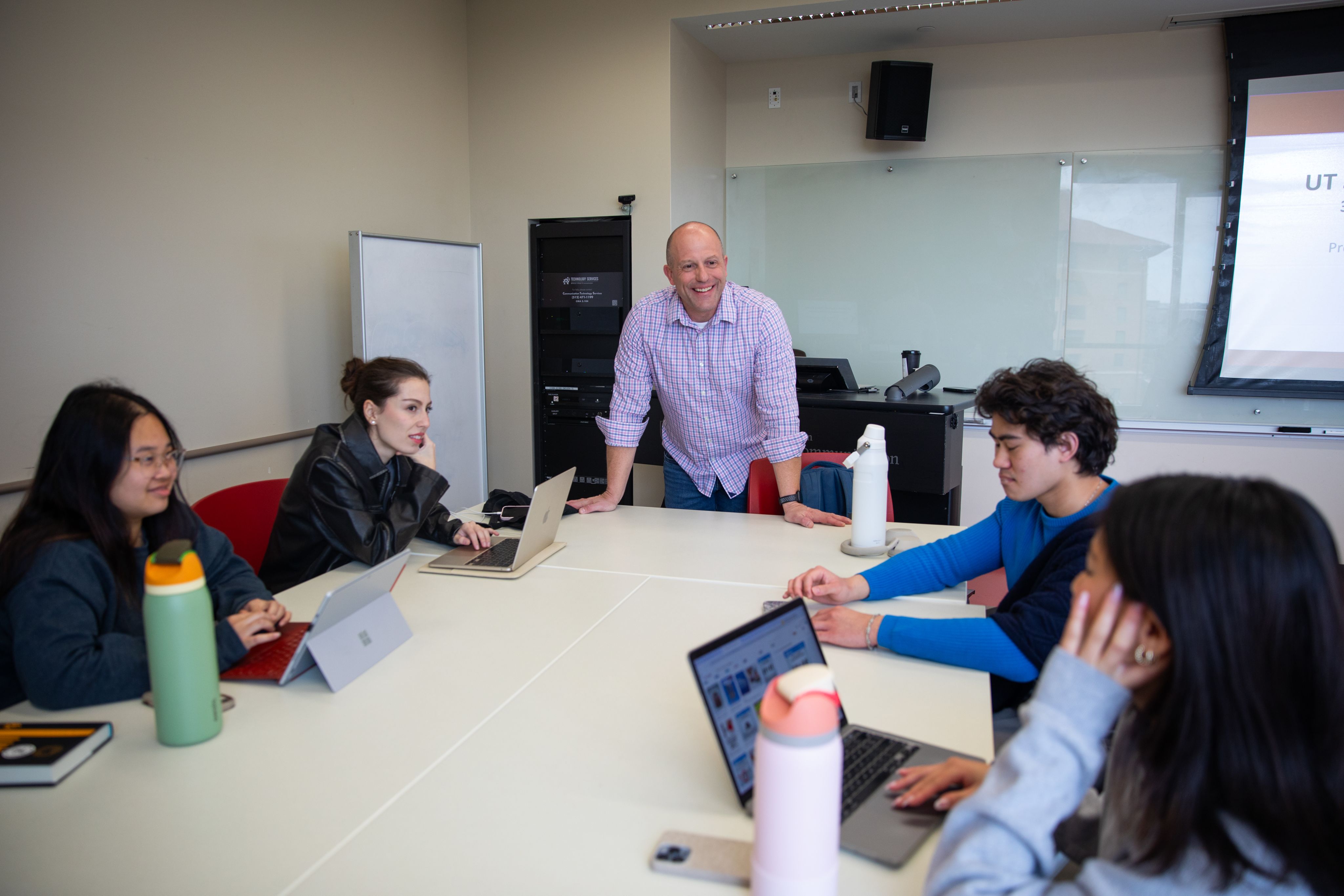Messaging matters
Messaging matters
Moody College Center for Health Communication crafts powerful messaging to help Eliminate Tobacco Use
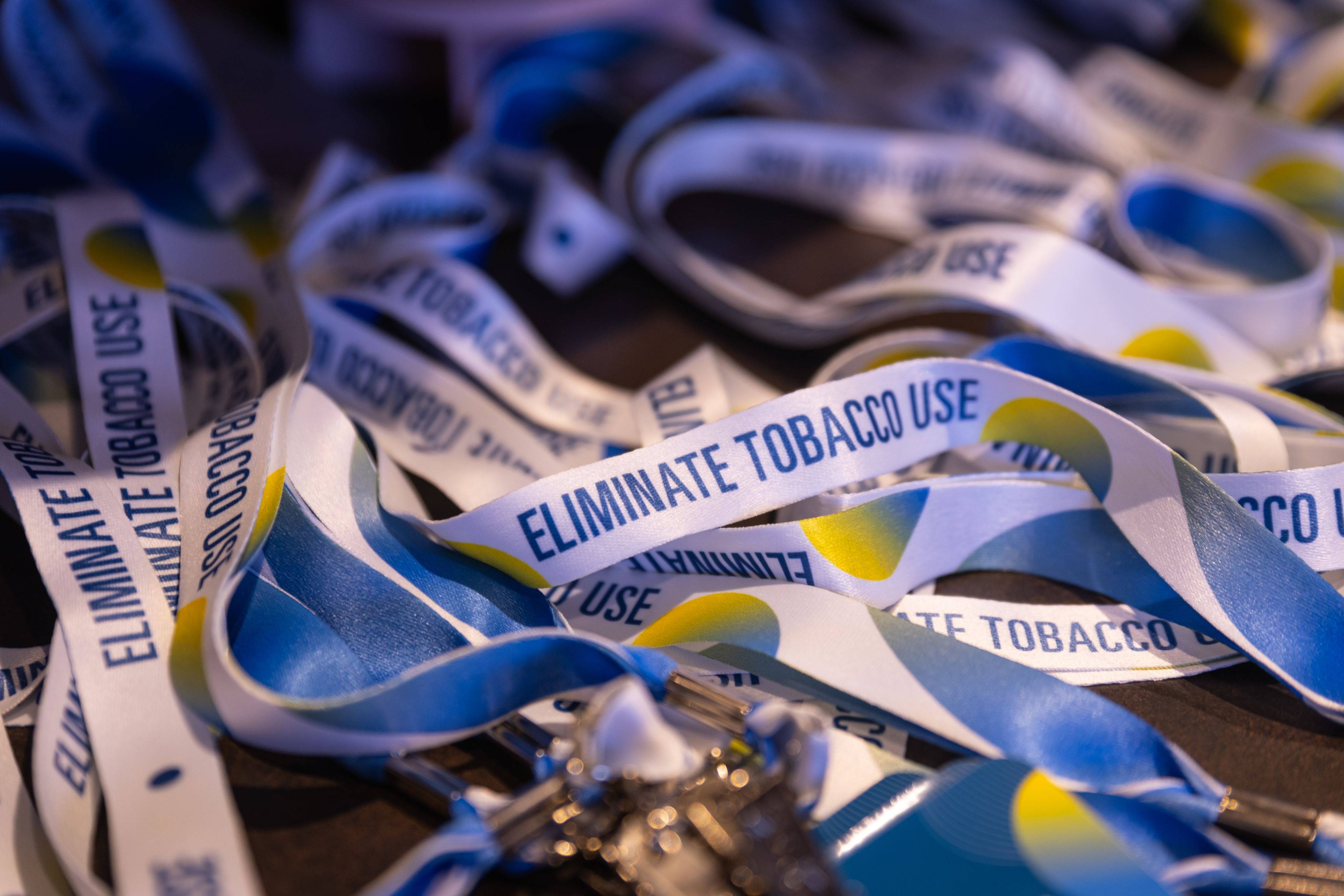
This year marks the 10th anniversary of the Eliminate Tobacco UseTM (ETU) initiative; a campaign established to create tobacco-free cultures on institutions of higher education through policy, prevention, cessation and research. Founded by the UT System and The University of Texas MD Anderson Cancer Center in 2015, ETU has since expanded to partners not just within the UT System but with other higher education leaders in Texas and partner states.
“In 2015, when we created the Eliminate Tobacco Use Initiative, 11 of our 14 UT campuses were tobacco-free and 10 of 14 included e-cigarettes in their policy,” said Jennifer Cofer, executive director of the EndTobacco Program at MD Anderson; leader of the ETU Initiative. “By 2018, all 14 UT component health and academic institutions were tobacco-free and included e-cigarettes.”
Photo by Chris Beeler/ MD Anderson Cancer Center
Photo by Chris Beeler/ MD Anderson Cancer Center
The UT System provided the ideal location to launch ETU as about 95% of adults who smoke started before reaching the age of 21. Because of this, colleges provide an optimal environment to nurture lifelong behaviors, be them positive or negative.
Fortunately, the initiative, and continuing research on the dangers of tobacco use, has been successful in getting people of all ages to quit. Researchers credit effective health messaging for helping make the campaign so powerful.
This is Moody College of Communication’s Center for Health Communication’s (CHC) specialty, which is why they partnered with the ETU initiative to connect with college-aged constituents.
“In 2017, we realized our initiative needed branding support, website presence, design for resources, and an overall health communication campaign,” Cofer said.
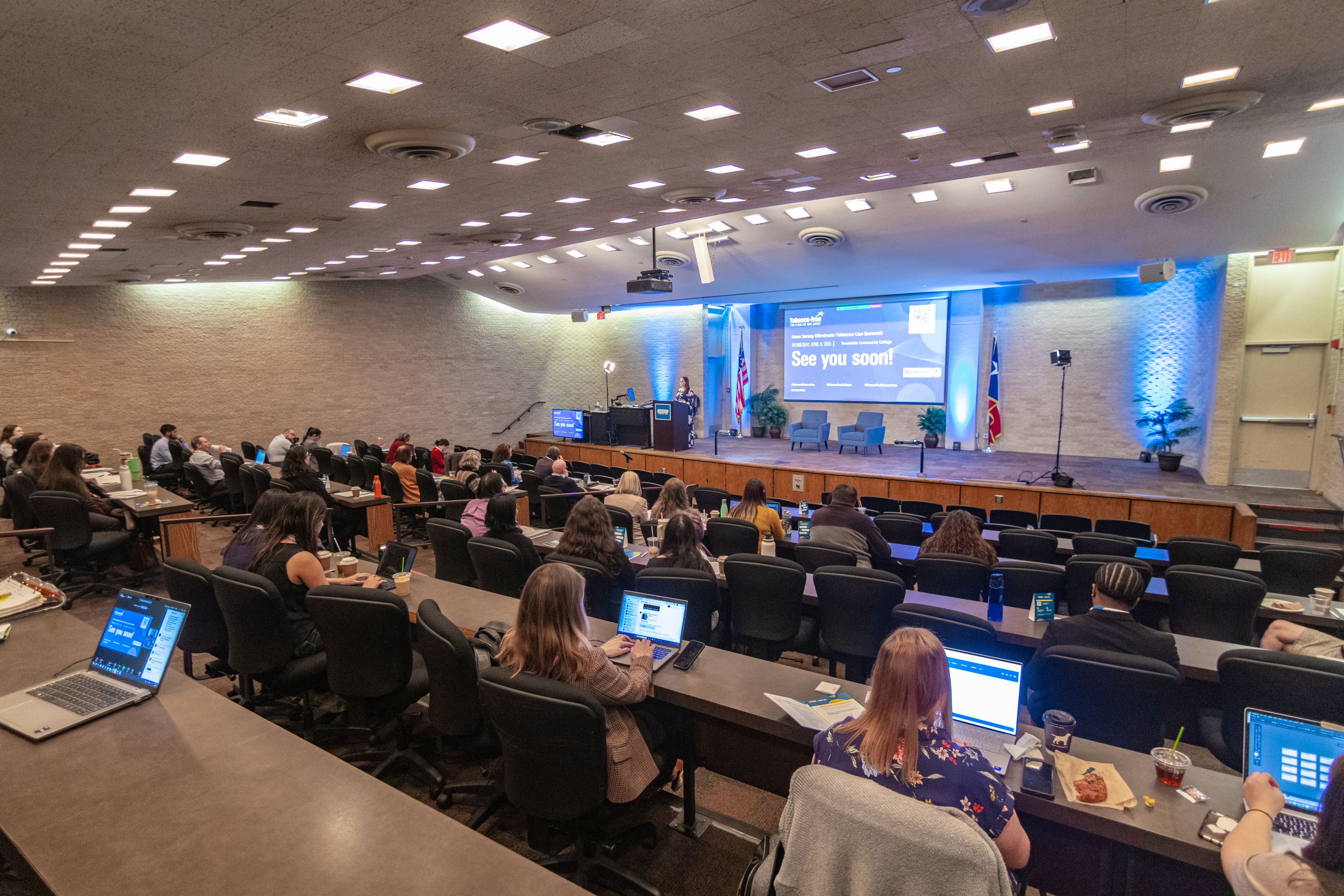
Moody College’s CHC is made up of an interdisciplinary group of scholars and health communication practitioners who look for opportunities to use communication to improve public health through evidence-based health communication research, education, and practice. They frequently work alongside partners in both the public and private health industries to build creative and engaging communication campaigns.
The CHC supports ETU in an ongoing partnership that helps to raise awareness about tobacco-free campus polices, sharing audience-centric, compelling information on the harms of tobacco and nicotine products along with the benefits of a tobacco-free life and knowledge and information about quitting and support services that can help.
Photo Courtesy of CHC.
Photo Courtesy of CHC.
Cofer said that the first product for the CHC to create was the EliminateTobaccoUse.org website and the 2017-2018 impact report.
To do this, the CHC developed a cohesive brand and visual identity for all 14 institutions within the UT System. The team then provided the necessary tools to effectively use the brand and then provided communication consultation to partners to ensure consistent and effective messaging.
“Because their work is so good, and we helped them make it look really good so that it spread beyond the UT System, that speaks to the power of communication,” said Mike Mackert, director of the CHC.
“One of the biggest challenges with this campaign is that most of the target audience are young adults and the negative health issues from smoking and vaping are further in the future.”
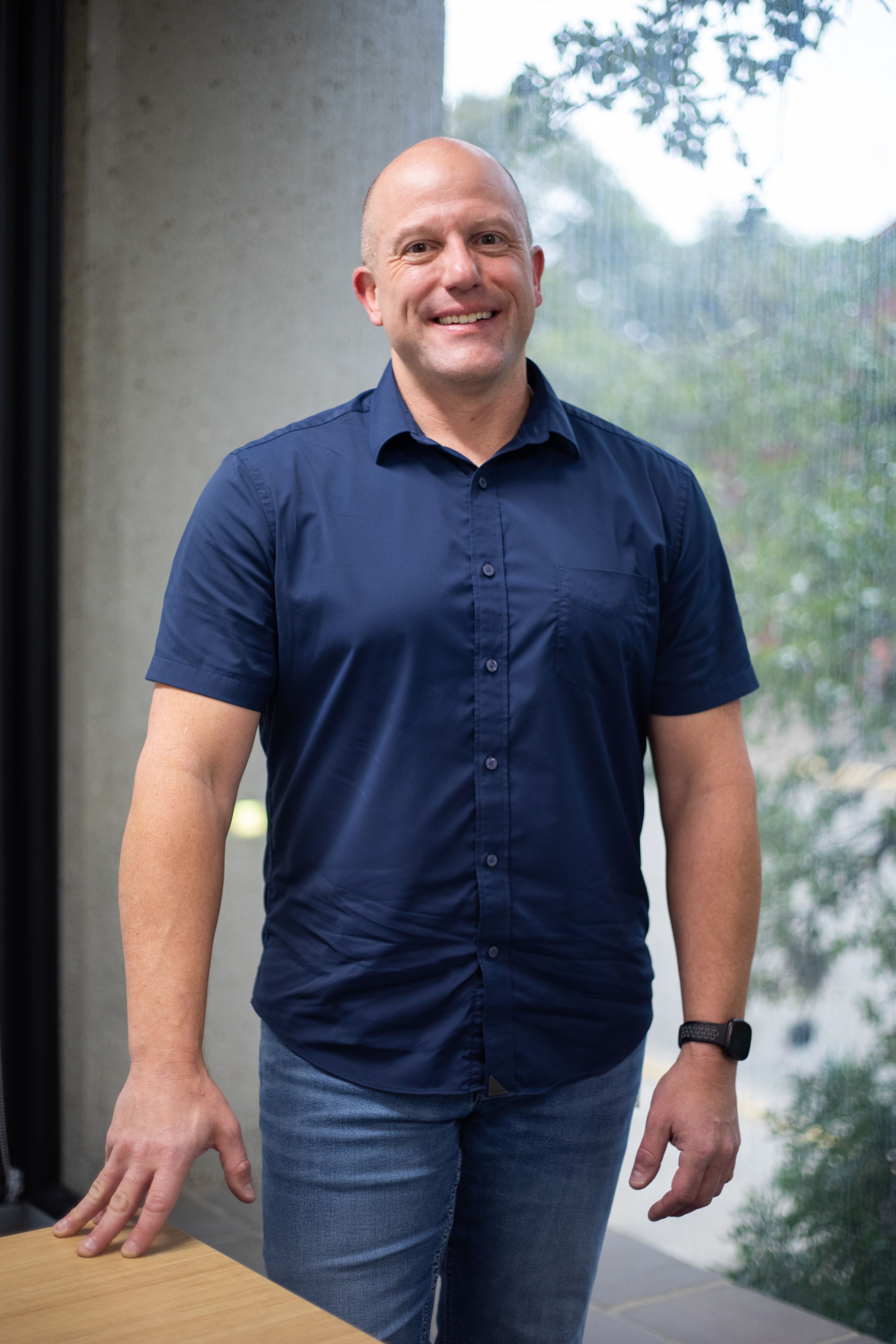
Creating comprehensive health communication toolkits for campuses was key. These include a campus communication toolkit that offers guidance on brand implementation, campaign materials and best practices for tailoring messages. In addition, assets for events, social media, and other signage toolkits were developed to assist campuses in crafting effective messaging.
Mackert with students at Moody College.
Mackert with students at Moody College.
Certainly, though, crafting messages to reach the variety of audiences targeted by ETU poses a challenge, especially reaching students on university campuses.
“One of the biggest challenges with this campaign is that most of the target audience are young adults and the negative health issues from smoking and vaping are further in the future,” Mackert said.
Ashley Garling, the assistant director of programs for the CHC, agrees that relevant messaging is the most important aspect of any campaign.
“With any audience figuring out motivation is the most important thing,” Garling said. “It’s about how to we speak to audiences to make the message matter. A lot of people have this, ‘it won’t happen to me’ feeling, and that’s just human nature, but our job is make this message relevant and important enough that helps them realize, ‘I really should do this, I really should stop’.”
Garling says that data shows that negative messaging and scare tactics are a little “old school” for a health campaign and that these types of messages don’t work.
“So, finding ways to motivate people in a positive way is important,” she said.

Mackert said that one of his favorite messages from the ETU campaign mentions that not smoking allows one to go one more day without washing their hair.
“That’s such a relevant message for a college student,” he said. “It matters to them this afternoon! But the risk of cancer down the road? That’s really hard for an 18-, 19-, or 20-year-old to wrap their head around.”
Other brightly colored materials and campus signage within the campus communications toolkit may include statements about how quitting can help a student save for a semester abroad, help them set an example for a younger generation, or simply point out that they are free to live their dreams without tobacco use or vaping.
Measuring success for this campaign can be difficult as there isn’t an exact science to counting the number of students, or UT system employees, who have decided to quit smoking or vaping because of ETU. But, Cofer says, the team can measure things like ETU website traffic and toolkit utilization, ETU summit attendance, and replication states.
Photo by Chris Beeler/ MD Anderson Cancer Center
Photo by Chris Beeler/ MD Anderson Cancer Center
“Over the past decade, we have stewarded three state initiatives to implement ETU in Missouri, New Jersey and Virginia,” she said.
Looking beyond the next 10 years of ETU, both MD Anderson and CHC teams hope that the initiative can keep going strong, creating a tobacco-free cultures on institutions of higher education.
“We’re looking at more national expansion, more state partners,” Garling said. “We all just want to help people live healthier lives and that’s really what the initiative is all about.”
“We’re looking at more national expansion, more state partners. We all just want to help people live healthier lives and that’s really what the initiative is all about.”
